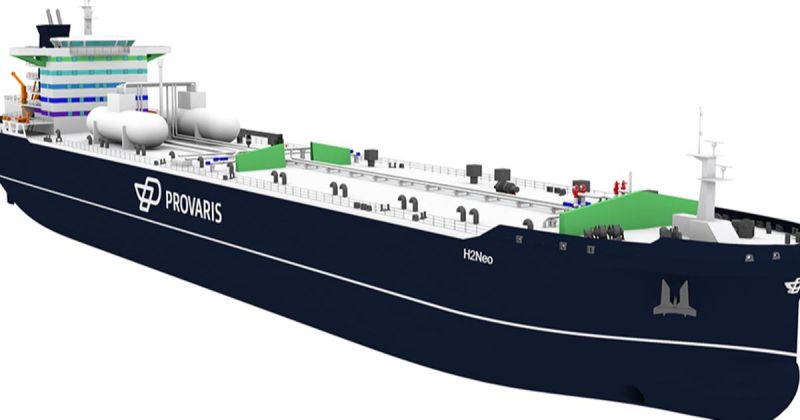Provaris Energy shows compression is superior in new hydrogen supply chain study

Provaris Energy Ltd has completed its 2023 Hydrogen Marine Transport Comparison Report, revealing the potential of compressed hydrogen in regional transport.
This study solidifies the many advantages of compressed storage in the maritime transport supply chain, underscoring its cost-effective delivery method to support the European Commission’s REPowerEU requirement for 10 million tonnes per annum imports by 2030.
The new report examines energy use and losses for each hydrogen energy vector - compression, liquefaction, and ammonia - and its influence on the full delivered cost of hydrogen.
Among others, it shows that energy use and loss across the entire supply chain associated with liquefaction and ammonia exceed 40%, while compression remains below 20%.
As well, compression is the most cost-effective option for regional transport distances from 500 to 4,000 nautical miles, with volumes of up to 500,000 tonnes per annum.
Most compatible
Provaris has been vocal about the importance of an efficient hydrogen supply chain, from renewable energy generation to hydrogen production and end-customer delivery.
Its new study shows that compression has the potential to revolutionise the regional transport of hydrogen, thanks to its supply chain efficiency and inherent simplicity.
Provaris believes these results will spur more adoption and propel the hydrogen industry towards a sustainable and economic solution.
Notably, the report affirms that Provaris’ proprietary H2Neo (430-tonne) and H2Max (2,000-tonne) compressed hydrogen carriers, along with the H2Leo compressed storage barge, offer a highly competitive marine transportation and storage solution for hydrogen, at scale over shipping distances of up to 4,000 nautical miles.
Superior option
Provaris managing director and CEO Martin Carolan said: “We are witnessing a remarkable increase in awareness and comprehension of some of the formidable challenges associated with delivering green hydrogen and the need for scalable solutions before 2030.
“Relying predominantly on ammonia supply chains to deliver hydrogen is not necessarily an efficient solution for governments and industries that require gaseous hydrogen to achieve emission reduction targets.
“Given the urgency to take immediate action and expedite the development of supply chains, compression emerges as a key enabler that can unlock the potential of renewable resources and deliver substantial volumes to regional markets while maintaining favourable economic returns.
“In contrast, the liquefaction and ammonia alternatives present less favourable economics. By embracing compression as a crucial element in our hydrogen infrastructure, we ensure a swifter realisation of emission targets for hard-to-abate sectors and effectively address the challenges we have ahead of us.”
Other options costly
Provaris chief development officer Garry Triglavcanin added: “A key objective of this report was to understand and identify each of the components that together delivered the complete ‘generation, production and delivery’ vector supply chain for marine transport as either compressed gas, liquefied, or ammonia, relying on renewable power generation.
“One of the key outcomes of the report confirms that hydrogen produced from a renewable energy resource and delivered by marine transport either required: i) a process such as compression that was suitable to ‘load follow’ the variability of the renewable generation profile; or ii) for liquefaction and ammonia, to the installation of a significant level of ‘battery and hydrogen storage’ capacity to enable the hydrogen to be export ready.
“The latter was found to have a significant impact on the cost of producing green hydrogen.”

